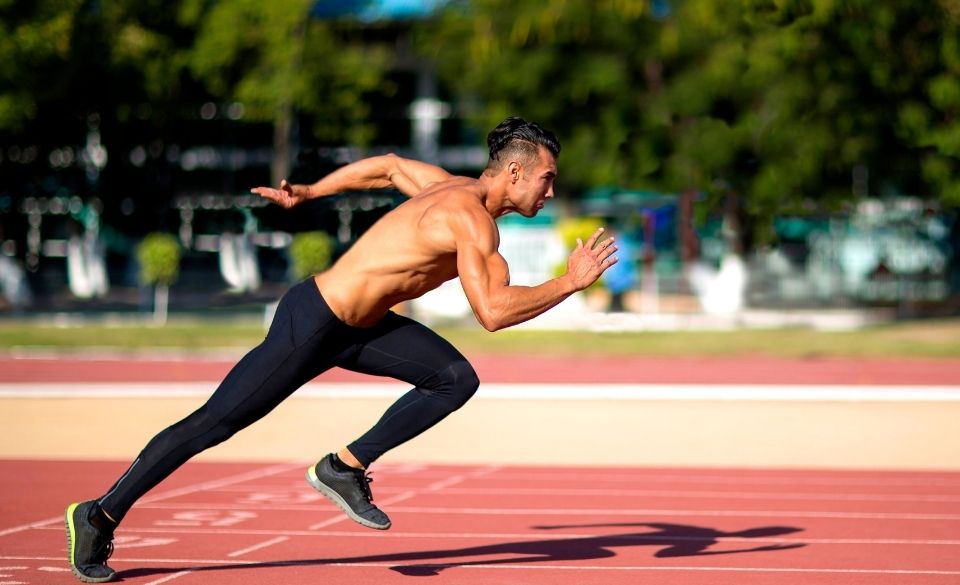
How To Get Faster At Sprinting? Read This Guide To Sprinting Workouts
Regardless if you are competing a 100m race or training for fun, learning how to get faster at sprinting can help improve your speed and efficiency as a runner. It can also improve your leg speed and running technique.
Thats why sprint training can be an alternative to regular running, as it can help break the boredom of long runs and intervals. Regardless if you are training for a sprint event or not.
However, since sprinting is very high impact, it is important to mix sprint training with gym work to help prevent injuries and improve your sprinting technique.
In this article, we explain how to get faster at sprinting, show you the best sprinting workouts to get faster and why you should incorporate one sprint training session into your weekly training.
So, keep reading to learn more.
How To Get Faster At Sprinting
If you want to learn how to get faster at sprinting, there are a few simple tips you can implement to get faster at sprinting. These include:
1.Your running form
Your running technique is one of the most important factors when trying to running faster. This has a lot to do with your posture, as this determines how fast you legs and body can move. Make sure you maintain a neutral head and neck alignment while looking forward. This will help your head and chin from dropping, causing your airways to compress. It will also help to keep a better upright posture when at speed. Your posture should remain tall throughout the sprint while maintaining a slight forward lean. Remember to relax your shoulders and prevent them from shrugging, especially at speed or when you start to feel fatigue.
2.Stride rate and length
Increasing the number of strides you do will help you cover more ground. It will also help you to increase your speed at a faster rate. When it comes to stride length, the length of your stride helps determine how quickly you leave the ground. This helps to control the pace of your sprint, while improve the power at which you push off the ground. If you stride is too long, it can reduce the speed at which you run at. Hence, a shorter and faster stride is more beneficial when it comes to sprinting.
3.Develop stronger muscles
Stronger muscles can help you push off the ground faster with more power. That’s why if you want to improve your sprinting it is recommend you implement some lower leg weight training exercises into your training plan. Not only that, stronger muscles can help prevent fatigue and injuries. However, if you are a long distance runner and adding one sprint session a week into your training, make sure you don’t add to much muscle mass to your body. Otherwise it may affect your performances over longer distances.
4.Fatigue
To learn how to sprint faster, you must to go into workouts fresh. Since the goal is to develop speed, if you go into a sprint training session tired, you will not be able to improve your top end speed as you won’t have the energy to do so. Instead, make sure you have an easy recovery day before any high intensity sprint sessions.

Best Sprinting Workouts To Get Faster
If you goal is tom improve leg speed by doing sprinting workouts, there are a few key sessions you should do. These include:
30 second sprints with 90 seconds recovery
Performing 30 second sprints requires top end speed (90% of your maximum). That means these types of sprint workouts are short but intense. Aim for ten repetitions of 30 second sprints while taking 90 seconds recovery between each effort. The recovery should be spent casually walking. Each repetition should be done with the wind on your back and over smooth flat terrain.
Progressive sprints
Progressive sprints are a good way to improve your sprinting technique and learn how to increase your stride. Go to your local running track or measure 100m in distance. Then perform 10 repetition of progressive sprints. This is done by increasing your speed every 20 meters until you reach 100m. By the time you reach the end of the 100 meters, you should be at around 90% of your maximum sprint speed. For the recovery, walk back to the start and repeat up to 10 times.
Short bursts of speed
Short by intense sprints can help develop explosive power, which is important when starting your sprint. Start by measuring out 30 meters or use a running track, and do 5-10 sprint starts. That means starting from a standing or sprinting position and exploding out of the blocks at full speed until you reach the 30 meter mark. These are super intense workouts, which means you should only be able to complete 5-10 efforts before your speed starts to decline. A good rule of thumb is once you find you can no longer increase the speed, it is time to end the session. For recovery, take anywhere from 3-5 minutes between each effort.
Before starting any types of sprinting workouts, do some dynamic stretching and a light jog. This will help warm up the muscles, increase heart rate and prevent injuries.
Always start with shorter sprint segments and increase these each week. Also double the duration of your interval to allow adequate recovery.
Last but not least, is to remember to warm down properly. This will help prevent DOMS and keep the muscles supple after training. Studies have also shown by warming down you will be less likely to get injured.



